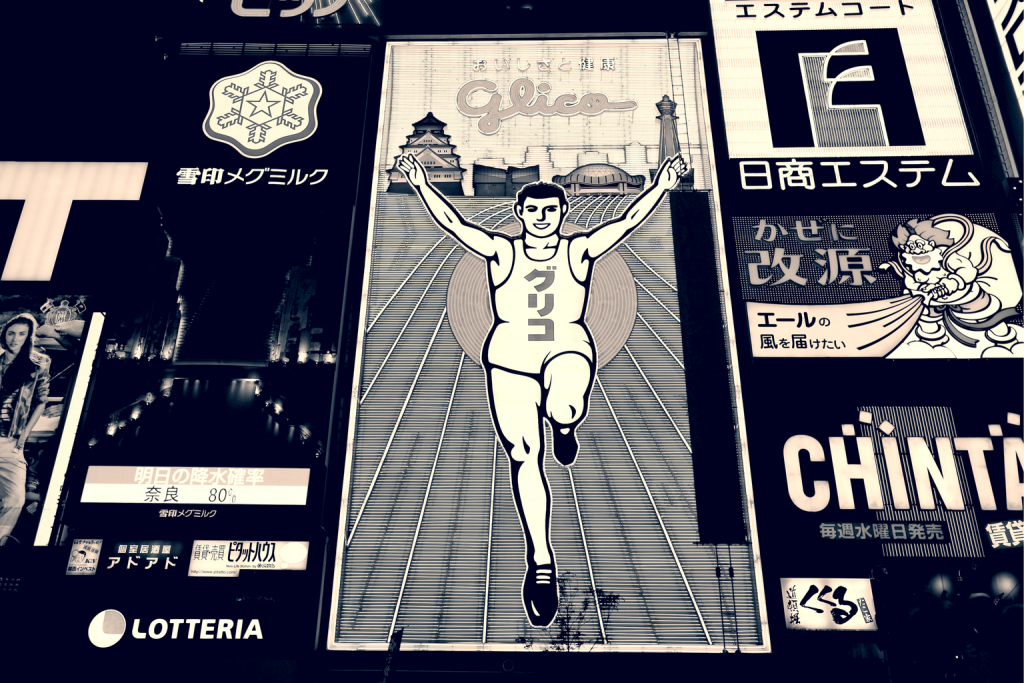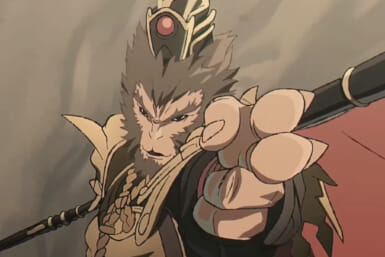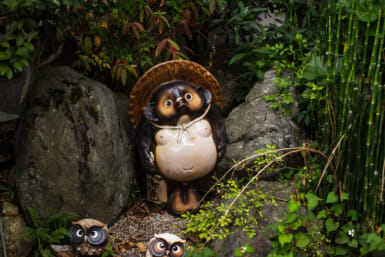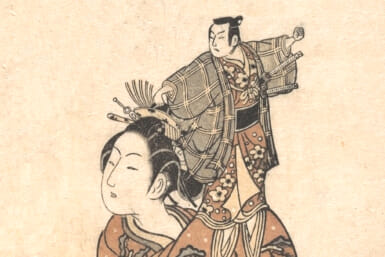With Tokyo Weekender turning 50 this year, we continue our roundup of news from the last 50 years. Earlier, we covered the most significant headlines of the 1970s and here we look back at the 1980s, a decade of economic prosperity in Japan that ended with the Nikkei Stock Average hitting a record high of 38.916.
The Birth of Pac-Man
Describing arcades as “gloomy places where only boys went to hang out,” 25-year-old Namco employee Toru Iwatani decided to create a game with women in mind. Feeling inspired while looking at his pizza with a slice taken out, he came up with the cute yellow character Puc-Man which debuted at a cinema in Shibuya on May 22, 1980 to favorable reviews. When the game was exported to America the name changed to Pac-Man as the distributors were worried about kids replacing the “P” with an “F.” A massive success in the States, it overtook Asteroids as the best-selling game in the country and now ranks as the highest grossing arcade game of all time.
Changing of the Guard
“A small man knocking over a giant is sumo’s greatest thrill,” said stablemaster Kitanofuji after seeing his protege, the 127kg wrestler Chiyonofuji defeat Yokozuna Kitanoumi in a play-off at Tokyo’s Grand Tournament in January 1981, earning promotion to Ozeki. Watched by 65 percent of the country’s TV audience, the vast majority tuned in hoping to see an upset. Kitanoumi, around 40kg heavier, had dominated the sport in the seventies but wasn’t popular due to his stern demeanor. The lightweight hero Chiyonofuji also slayed Goliath in Nagoya six months later, becoming the 58th Yokozuna. He went on to set the record for most top division wins (Hakuho now leads the way) and in 1989 was presented with a People’s Honour Award.
Disneyland Opens
On a rainy Friday morning, April 15, 1983, Oriental Land president Masatomo Takahashi and Walt Disney chairman E. Cardon Walker cut the ribbon to signal the opening of the first Disney park to be built outside the United States. With the park occupying 114 acres, the centerpiece of Tokyo Disneyland was the Cinderella Castle. Around 3,000 guests were in attendance on the first morning, paying ¥3,900 for a one-day pass. Within a year, sales had exceeded 10 million and numbers continued to grow in 1985 with the introduction of the nighttime “Tokyo Disneyland Electrical Parade.” The final cost of the park was $1.4 billion, which the Oriental Land Company paid off in three years.
The Monster With 21 Faces
A mysterious set of crimes began with the kidnapping of Glico president Katsuhisa Ezaki on March 18, 1984. Though he escaped, three of the famous snack-maker’s vans were then set ablaze. Shelves had to be cleared when a letter arrived signed by “Kaijin Nijuichi Menso” (the Monster with 21 Faces) claiming cyanide-laced candy had been distributed to their stores. The next targets included Marudai Ham, House Foods Corporation, and most notably Japan’s largest confectioner Morinaga. Cyanide was discovered in 21 of their candy bars. The culprit(s) mocked the police while continuing to evade capture. The reign of terror ended following the suicide of Shiga Prefecture’s police superintendent Shoji Yamamoto. No arrests were ever made.
The Rise of Studio Ghibli
Following the success of the 1984 animated feature Nausicaä of the Valley of the Wind, Hayao Miyazaki, Isao Takahata, Toshio Suzuki and Yasuyoshi Tokuma launched Studio Ghibli (meaning a hot dust-carrying wind in Arabic) on June 15, 1985. The studio’s first official film was Laputa: Castle in the Sky, partly inspired by Miyazaki’s visit to Wales where he witnessed the miners’ strike. In 1988, Takahata’s war movie Grave of the Fireflies and Miyazaki’s lighthearted fantasy flick My Neighbor Totoro were released as a double feature. The latter amassed a worldwide cult following. The company’s biggest box office success of the decade was Kiki’s Delivery Service, Japan’s highest grossing film in 1989.
The Deadliest Single Air Disaster in History
On a sweltering day on the eve of the Obon holidays in 1985, many passengers were flying home to visit their families and pay respect to their ancestors. JAL 123 was one of several flights close to capacity. Including crew members, 524 people were on board. Tragically, only four survived. Twelve minutes in, the rear pressure bulkhead failed due to a faulty repair. The tail of the plane was torn off, crippling the aircraft. Captain Masami Takahama and co-pilot Yutaka Sasaki gallantly kept it airborne for 32 minutes before crashing into Mount Osutaka. The most famous casualty was Kyu Sakamoto, the only Asian recording artist to top the American Billboard chart.
The Recruit Scandal
It was a stocks-for-favors scandal by Tokyo-based human resources company Recruit in the mid-late eighties that led to the resignation of many prominent figures including prime minister Noboru Takeshita as well as the suicide of his secretary. Chairman Hiromasa Ezoe offered business leaders and senior politicians shares in the organization’s subsidiary Cosmos shortly before it went public in 1986. Recipients received huge profits when their shares debuted on the stock market, almost doubling the initial asking price. After the truth came out in 1988, criminal charges were filed against several businessmen and bureaucrats, however, leading political figures escaped indictment. Ezoe, the last defendant to face trial, was given a suspended three-year sentence.
The Yama-Ichi War
A conflict born out of jealousy that lasted four years ended with several arrests and many gang members seeking police protection. Following the natural deaths of “The Japanese Godfather” Kazuo Taoka and his wakagashira (underboss) Kenichi Yamamoto, Masahisa Takenaka was elected kumicho (boss) of the Yamaguchi-gumi. Hiroshi Yamamoto felt he should’ve been chosen for the role and formed his own group, the Ichiwa-kai. He ordered a team of hitmen to kill Takenaka and two other members. New leader of the Yamaguchi-gumi Kazuo Nakanishi vowed to avenge the murders by annihilating the Ichiwa-kai. Over the next four years, 36 gangsters were murdered and many seriously injured as the war escalated. A peace accord was brokered in 1989.
The Little Girl Murderer
Between August 1988 and June 1989 Tsutomu Miyazaki kidnapped and killed Mari Konno (4), Masami Yoshizawa (7), Erika Namba (4) and Ayako Nomoto (5). A necrophile who cannibalized and drank the blood of one of his victims, he was called the “Little Girl Murderer” and the “Otaku Murderer” due to his obsession with anime. He tried to blame his crimes on an alter-ego named “Rat-Man” that lived inside him, yet despite being diagnosed with one or more personality disorders, psychologists concluded that he was sane enough to know what he was doing. Sentenced to death in 1997, he was hanged on June 17, 2008. The timing of the execution was suspected to be a reaction to the Akihabara Massacre which occurred nine days earlier.
End of an Era
At 6:33 am on January 7, 1989, Emperor Hirohito passed away in his sleep after suffering from intestinal cancer. It signaled the end of the 62-year Showa Era. A diary entry dated April 7, 1987 revealed that the man formerly known as a god in Japan didn’t want to live much longer as it would only lead to more anguish due to sad personal events and ruminations about his role in WWII. Three weeks later, he fell ill at his 85th birthday party. Emissaries from 163 countries and 27 international organizations attended his funeral while 200,000 people lined the site of the procession. The Heisei Era began on January 8, 1989.
In the Charts
Best-Selling Single: Christmas Eve (Tatsuro Yamashita)
Best-Selling Album: Reflections (Akira Terao)
Popular Films: Kagemusha, Ran (Akira Kurosawa), Black Rain (Shohei Imamura), The Funeral, Tampopo (Juzo Itami), My Neighor Totoro, Kiki’s Delivery Service (Hayao Miyazaki)
New Releases: Washlet (1980), Donkey Kong (1981), Compact Discs (1982), Akira (1982), Nintendo Entertainment System (1983), Dragon Ball (1984), Super Mario Bros. (1985), Nintendo Gameboy (1989)
Read the Headlines from Tokyo Weekender’s Very First Issue!
On February 13, 1970, editors and publishers Susan Scully and Millard (Corky) Alexander delivered the first issue of Tokyo Weekender with the announcement, “That’s us, folks–a spanking, new weekly publication.” See our roundup of the topics and issues that made headlines 50 years ago in Tokyo in that very first issue here.
Updated On December 28, 2022









